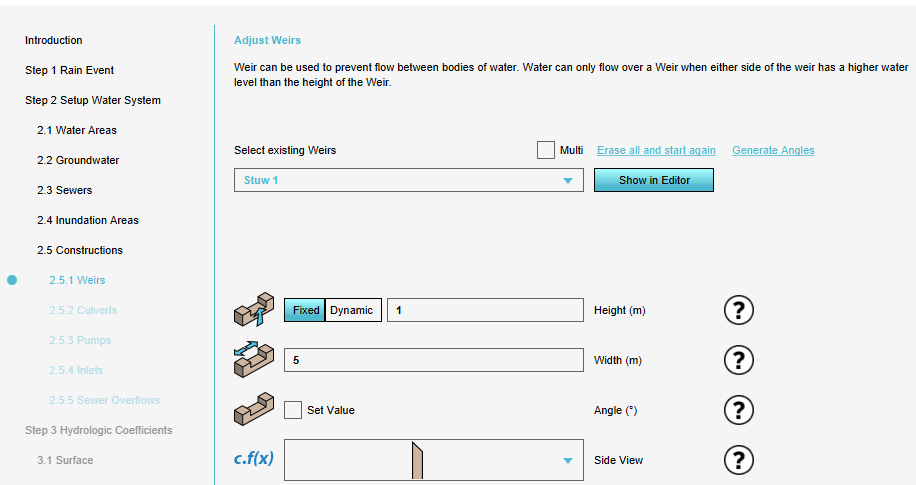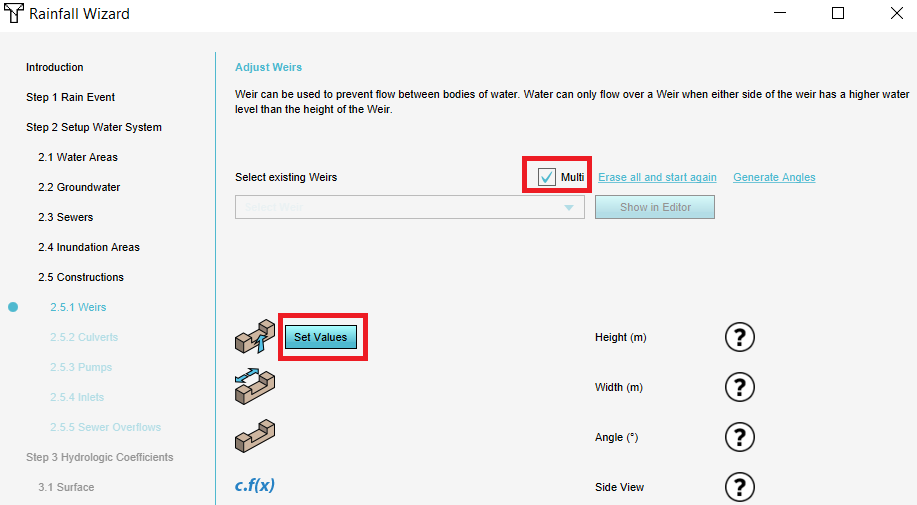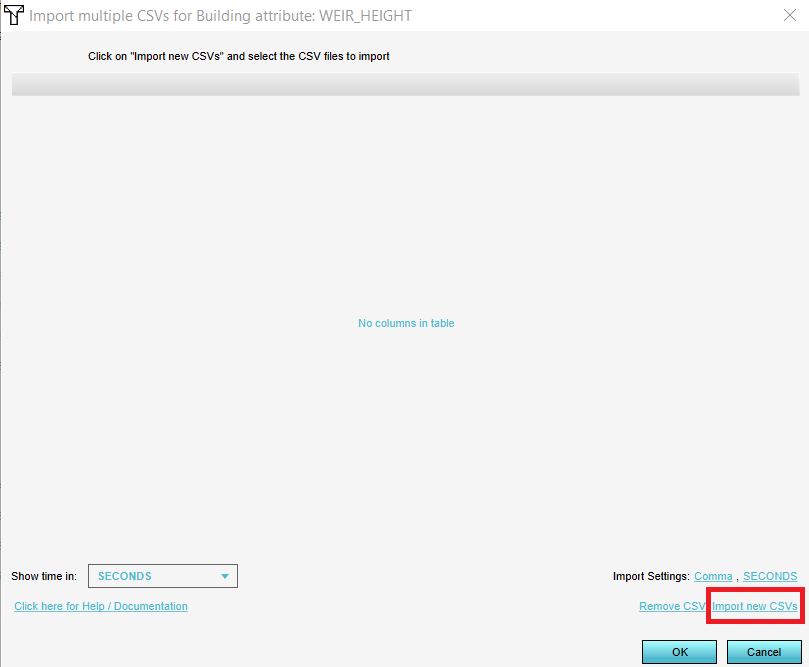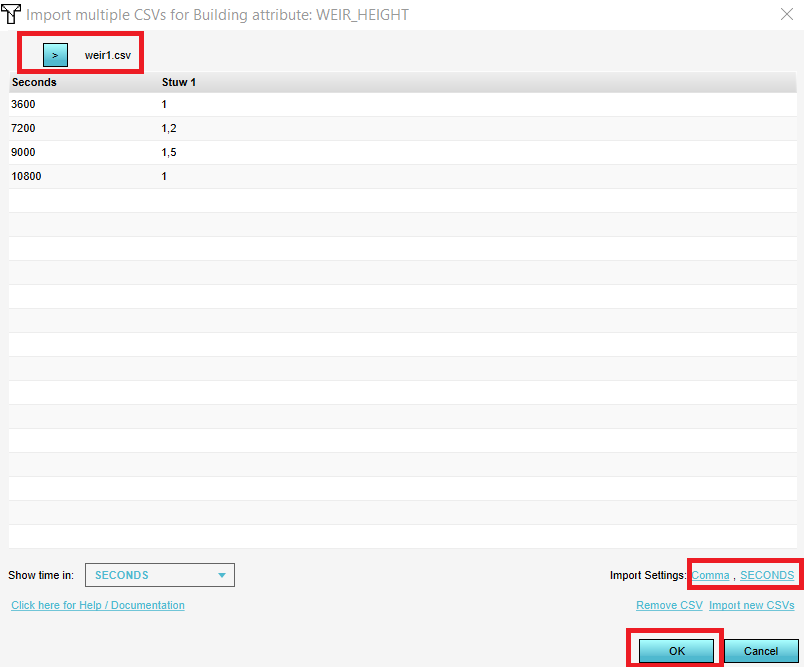How to import a time sequence for multiple structures: Difference between revisions
Jump to navigation
Jump to search
No edit summary |
No edit summary |
||
| (5 intermediate revisions by one other user not shown) | |||
| Line 1: | Line 1: | ||
{{Editor steps|title=|In the [[Water Overlay Wizard]], go to step 2 and find the [[Hydraulic_structures_(Water_Overlay)|structures]] you would like to enter a time sequence for.|Check the ''Multi'' checkbox and click on the ''Set Values'' button for the desired attribute.|In the new panel that pops up, click on ''Import new CSVs'' and select the CSV files.|Browse with the button at the | {{Editor steps|title=|In the [[Water Overlay Wizard]], go to step 2 and find the [[Hydraulic_structures_(Water_Overlay)|structures]] you would like to enter a time sequence for.|Check the ''Multi'' checkbox and click on the ''Set Values'' button for the desired attribute.|In the new panel that pops up, click on ''Import new CSVs'' and select the CSV files.|Browse with the button at the top through the CSV files to see if they are imported correctly.|Optionally, change the delimiter and time units and click on ''Ok''. The data in the CSV files is now used to set the attribute for the structures dynamically. }} | ||
<gallery mode=nolines> | <gallery mode=nolines> | ||
| Line 8: | Line 8: | ||
</gallery> | </gallery> | ||
{{article end | |||
|notes= | |||
* The [[CSV]] file to import a time sequence should look as follows: | * The [[CSV]] file to import a time sequence should look as follows: | ||
{{code|1= | {{code|1= | ||
time | time,Stuw 1 | ||
3600,0.03 | 3600,0.03 | ||
7200,0 | 7200,0 | ||
| Line 20: | Line 21: | ||
* When importing a [[CSV]] for a time sequence, it's possible to indicate whether the time is in seconds, minutes, or hours. The {{software}} then automatically converts the time to the correct data for the model. | * When importing a [[CSV]] for a time sequence, it's possible to indicate whether the time is in seconds, minutes, or hours. The {{software}} then automatically converts the time to the correct data for the model. | ||
* For the [[CSV]], it is possible to choose a comma or semicolon as delimiter. | * For the [[CSV]], it is possible to choose a comma or semicolon as delimiter. | ||
|seealso= | |||
* [[Time_sequence_(Water_Overlay)|Time sequence]] | |||
* [[CSV]] | |||
|howtos= | |||
* [[How to import a time sequence with a CSV]] | |||
}} | |||
[[Category:How-to's]] | |||
Latest revision as of 15:24, 30 January 2024
How to import a time sequence for multiple structures:
- In the Water Overlay Wizard, go to step 2 and find the structures you would like to enter a time sequence for.
- Check the Multi checkbox and click on the Set Values button for the desired attribute.
- In the new panel that pops up, click on Import new CSVs and select the CSV files.
- Browse with the button at the top through the CSV files to see if they are imported correctly.
- Optionally, change the delimiter and time units and click on Ok. The data in the CSV files is now used to set the attribute for the structures dynamically.
Notes
- The CSV file to import a time sequence should look as follows:
time,Stuw 1 3600,0.03 7200,0 9000,0.03 10800,0.06
The first row should contain the headers. The first column should be the time, the second column the values. Make sure the name of the second column has the same name as the hydraulic structure the attributes belong to. For every CSV file, the header name of the second column should exactly match the name of the structure to map the attributes to the right structure.
- When importing a CSV for a time sequence, it's possible to indicate whether the time is in seconds, minutes, or hours. The Tygron Platform then automatically converts the time to the correct data for the model.
- For the CSV, it is possible to choose a comma or semicolon as delimiter.



